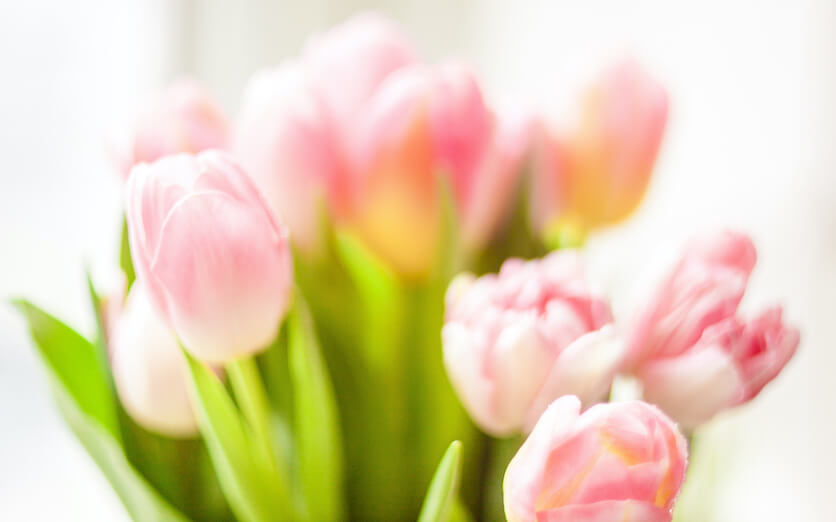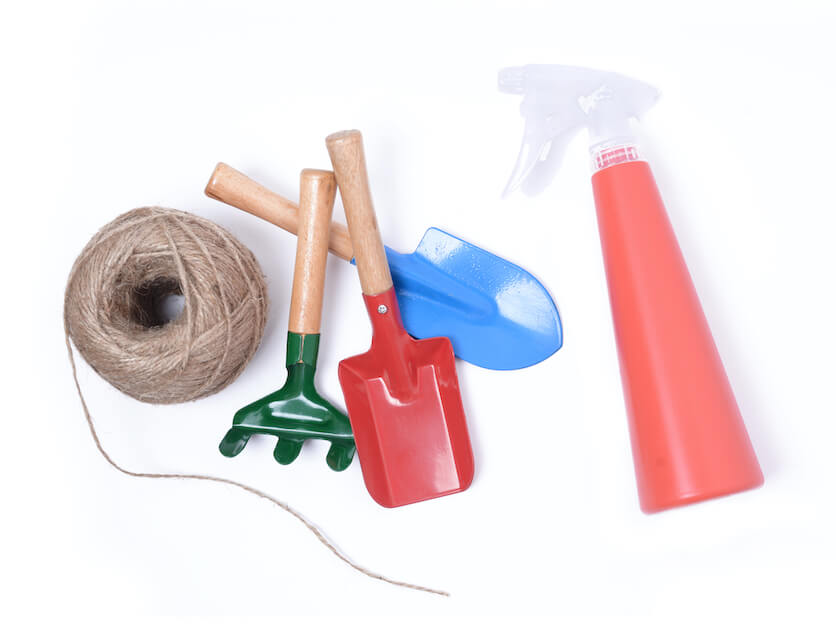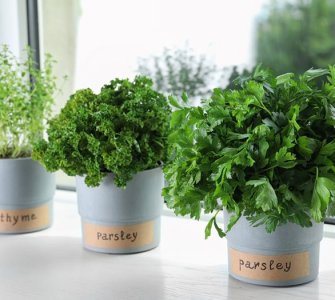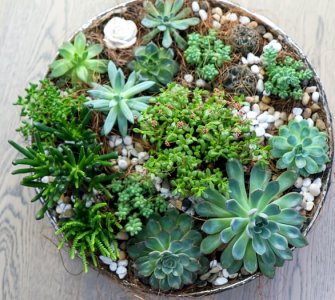The tulip plant is synonymous with Spring. There is something miraculous as hyacinths, tulips, and daffodils spring up and out of the ground as winter makes its exit. If I were to tell you that you can enjoy beautiful tulips while sitting next to a fireplace during the winter, would you believe me? No matter how mind-boggling this may sound, you can grow tulips indoors!
Growing tulips indoors is not as difficult as you think. Let’s dig in and take a close look at the life beneath the soil that we don’t see when it comes to a tulip plant.

Table of Contents
How Long Do Potted Tulips Last Indoors?
Tulips have a rather interesting lifecycle. You are about to find out why you shouldn’t throw a tulip plant away once the flower has withered away. Just because the feature of the bloom is gone, there’s still life in the plant.
Indoor tulips can last for months. Because it takes anywhere from 2-4 months for a potted tulip to sprout and grow. Blooming occurs towards about the 3 ½ to 4-month marker. The flowers last for 2-4 weeks before dying.
A Tulip’s Lifecycle
Tulip bulbs for outdoor gardens are typically planted in the fall. They begin to form roots after about a month and then rest for a few months during winter. As Spring approaches (March/April,) leaves and the flower eventually sprout up and out of the ground. By mid to late April, the flower is spent. Late summer, the mother bulb begins to form baby bulbs that form roots and begin a new life. The life cycle repeats itself all over again.
How Do You Care For Indoor Potted Tulips?
Learning how to plant tulip bulbs and how to take care of tulips indoors is fairly simple. Sure losing a plant or two should be expected with your first try until you perfect the process. I will walk you through the steps on how to take care of tulips indoors once your bulbs sprout up.
One of the first questions I get from my readers when trying to grow these beauties inside is, “Why are my potted tulips dying?” Sometimes soil conditions aren’t right, or your plant needs more light. To be a successful indoor gardener, it helps to have an understanding of what the basic needs are of indoor plants. It’s these things that you’ll tend to as part of your tulip care indoors.
How to Grow and Care For Indoor Tulips
Here are the basic needs of a tulip plant:
- Soil conditions designed for tulips.
- The right container that’s not too big or too small.
- Access to incoming sunlight.
- Preventive maintenance.
- Treatment for any potential disease or pests.
- An environment that is at the right temperature.
Now let’s zoom in on the specifics!
1. Select The Right Container
One of the most common mistakes made when growing tulips indoors is planting them in a pot that’s either too large or too small and lacks a drainage hole in the bottom. First, you’ll need to decide on how big you want your indoor tulip plant to be. Outdoors, it’s typical to plant numerous bulbs in large containers; however, indoors, you may want to scale down to be able to fit the pot on a stand or shelf.
For about 3-6 bulbs, a container should be a minimum of about 15” deep and 18-20” wide. There should be a drainage hole in the bottom of the container. Tulips do well in almost any type of container, whether terra cotta, ceramic, wood, or plastic.
You can find some inspiration on my website on finding and repurposing items for containers. Stop by and see if any of our creative ideas catch your fancy.
2. Chose the Potting Soil Carefully
A soilless potting mix is ideal to use for indoor tulip plants. Fill the container 1/4 full of the potting mix. Place your tulip bulbs into the potting mix so the pointed end is facing up and the root end is facing down. Pour enough potting mix on top of the bulb(s) so that your bulb is about 8” deep. Water thoroughly, and now you’re ready to find a place to keep your plant.
3. Placement: Mind Environmental Parameters
Indoor plants, especially in an apartment without a balcony, can be a bit cranky when it comes to the temperature and amount of accessible sunlight in your house. I quickly discovered a faux pa by placing my plants on a window sill and forgetting about them. You would think a plant would get enough sun, but often, they may not.
Also, if you live in a climate where winters are brutally cold, you may need to adjust the thermostat slightly to accommodate your tulip plant.
Tulips planted outdoors require full sun to partial shade. However, indoors, they will need to be placed where the plant receives six hours of direct sun. South-facing windows are usually the best place for them.
If you don’t have a sunny window, an LED full spectrum grow light is an alternative. This type of grow light is perfect for other indoor plants you might have that also need a hefty dose of sunlight for prolonged periods.
Window Vs. Grow Light
A sunny window provides free access to sunlight and provides more wavelengths a plant requires to thrive. However, in comparison to a grow light, there are some disadvantages. Grow lights cost to run and maintain the bulbs (which can be expensive.) The upside to a grow light is you have control over its use, whereas the sun through the window you don’t. During the winter, sunlight intensity and length are shorter, and this is where a grow light comes in handy.
Temperature Of The Room
Tulips are happy if their environmental temperature is much colder than you think. They do best if the room they are placed in averages about 30-55 degrees (F) (-1 to 12 degrees C.)
5. Be Diligent with Tulip Care
I have a lot of readers asking, “How often do you water tulips indoors?” Watering your indoor tulip plant requires just the right amount. Many indoor gardeners tend to overwater, and before you know it, you have root rot which can be the death sentence for a plant.
Having the right type of watering can is something that not only makes watering easy but helps to prevent you from overwatering. Check out my blog article that covers indoor gardening tools that includes a watering can.

Debris And Decaying Plant Matter Removal
Any plant matter left sitting on top of the soil in the container or dead/decaying parts still intact on the plant are at high risk of developing a disease or attracting pests. Part of a weekly maintenance routine should include cleaning up and trimming away dead plant matter. An ounce of prevention goes a long way!
When And How To Remove A Spent Tulip Flower
The flowers of a tulip plant will stay beautiful anywhere from a few weeks to almost a month. Leaving a dead flower on the plant causes the tulip plant to direct its energy to the flower. Now, if that spent flower were trimmed off, the plant’s energy would be distributed elsewhere where it’s needed. Use sharp garden shears to cut the flower off.
Potential Pests and Disease: What To Use For Tulip Treatment
If you happen to notice your tulip plant is looking a bit under the weather or little crawling things have set up home on your plant, it’s time to take action. There are numerous options to treat your plant, so it’s best to consult with your local gardening store.
If you bring outdoor container tulips in for the winter, disease may have already established itself within the plant. Some of the most common diseases in tulips include root rot (from overwatering) and Botrytis blight.
Hitchhikers may decide to use your tulip plant to gain access to the indoors. Some of these pesky critters include thrips, flies, and fungus gnats. So watch out for them!
Wrap Up
I could go on and on when it comes to tulips (and roses.) However, in closing, I would like to tell you what I do with my tulip plant once the growing season is over. Some gardeners toss the bulb out while others save the bulb to plant outdoors come fall again.
Replanting tulip bulbs works fine for reemerging leaves, but you probably won’t see it bloom. I trim the leaves from the bulb and place the bulb into a paper bag and my refrigerator until it’s time to plant again in the fall.
You have enough info to get your indoor tulips going. Don’t forget to check out my blog, which has numerous gardening resources. Happy gardening!


